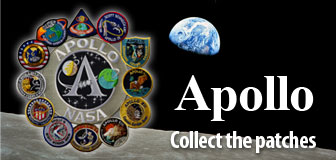PHOTOS: This year's highlights from Saturn
BY STEPHEN CLARK
SPACEFLIGHT NOW
Posted: December 27, 2011
NASA's Cassini spacecraft circling Saturn returned scores of picturesque scenes of the giant planet and its moons in 2011, opening new research horizons and dazzling the public with colorful views of the final frontier.
NASA released color images last week showing Saturn, its methane-rich moon Titan and some of the planet's other rocky satellites. Scientists have discovered 62 moons orbiting Saturn, and many of the moons were found in images returned from the Cassini spacecraft.
Cassini is in an extended mission to study Saturn through 2017, when summer begins in the planet's northern hemisphere.
Photo credit: NASA/JPL-Caltech/Space Science Institute

Saturn's largest moon Titan is shrouded in a thick haze of atmospheric clouds in this view captured Sept. 11, 2011.

NASA's Cassini spacecraft chronicles the change of seasons as it captures clouds concentrated near the equator of Saturn's largest moon, Titan. Methane clouds in the troposphere, the lowest part of the atmosphere, appear white here and are mostly near Titan's equator. The darkest areas are surface features that have a low albedo, meaning they do not reflect much light. This near-infrared image was captured in 2010 but not released until March 2011.

A quintet of Saturn's moons come together in the Cassini spacecraft's field of view for this portrait from July 29, 2011. Janus (179 kilometers, or 111 miles across) is on the far left. Pandora (81 kilometers, or 50 miles across) orbits between the A ring and the thin F ring near the middle of the image. Brightly reflective Enceladus (504 kilometers, or 313 miles across) appears above the center of the image. Saturn's second largest moon, Rhea (1,528 kilometers, or 949 miles across), is bisected by the right edge of the image. The smaller moon Mimas (396 kilometers, or 246 miles across) can be seen beyond Rhea also on the right side of the image.

The huge storm churning through the atmosphere in Saturn's northern hemisphere overtakes itself as it encircles the planet in this true-color view from NASA's Cassini spacecraft taken on Feb. 25, 2011.

NASA's Cassini spacecraft has spotted a glowing patch of ultraviolet light near Saturn's north pole that marks the presence of an electrical circuit that connects Saturn with its moon Enceladus. This newly discovered patch occurs at the 'footprint' of the magnetic connection between Saturn and Enceladus and indicates electrons and ions accelerating along magnetic field lines.
BACK TO BEGINNING >
|
|









